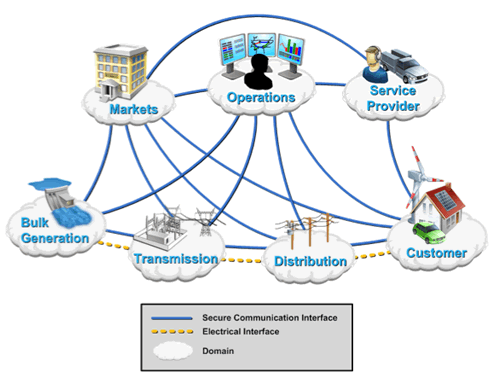NIST Smart Grid Conceptual Model
Under the Energy Independence and Security Act (EISA) of 2007, the National Institute of Standards and Technology (NIST) has "primary responsibility to coordinate development of a framework that includes protocols and model standards for information management to achieve interoperability of smart grid devices and systems…". See: www.nist.gov/smartgrid/.
NIST has been tasked with building on work that has been previously done within the private and public sectors to create framework using a systems approach to be flexible, uniform and technology-neutral, because no single technology developed will be able to satisfy all requirements for the smart grid. By building a framework based on possible application scenarios a robust model develops, the first release, a high-level conceptual reference model for the Smart Grid, “NIST Framework and Roadmap for Smart Grid Interoperability Standards, Release 1.0”.
The NIST Conceptual Reference Model is descriptive, and is intended to be high-level. The NIST conceptual Model can serve as a tool for identifying actors and possible communication paths in the Smart Grid. The figure below provides a high-level grouping of what NIST has deemed as the smart grid domain. The seven Domains in the Smart Grid Conceptual Model include: customers, markets, service providers, operations, bulk generation, transmission and distribution.
Seven smart grid domain in the NIST Conceptual Model:
